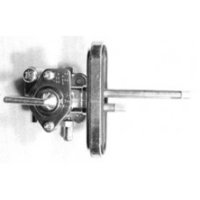butterbeats
XS400 Addict
Hi All,
I have a leaking petcock. I wanted a new replacement and also to try to repair the old. I just bought a replacement petcock from an Australian xs650 specialist. I assumed the petcock where the same within the year models, so hopefully a XS650 petcock from 1977 would swap for my XS400 1977 petcock. He suggested and sold me a modern / updated replacement. When the replacement arrived I realised it doesn't have a valve for the vacuum tube/pipe. Which I could not see in the image on his website. The petcock fits but does not have valve for the vacuum tube, which is found at the back of the petcock. He reassures me that it will work great and all I need to do is add a cap to the valve end.
Anyone had any experience with these replacement petcocks?? Or any tips??
(more info on the replacement http://www.geoffsxs.com.au/OpenCart/index.php?route=product/product&path=4_34&product_id=441 )
I am also trying to repair my existing petcock. I opened it up and nearly all the rubbers were in good working order. Except the largest rubber, the main point of contact with the tank. Time and usage has made the washer/gasket flatter. Taking it off the tank rendered the seal not as tight as required. Rather than buy a whole replacement kit, I am in the process of adding some depth to the top gasket on the petcock with some electrical tape. I put an image up at the halfway point. I added two thicknesses on electrical tape to the bottom and then cut the shape out of them.
Any tips?? Any suggestions for glue or fuel proof filler to add to the bottom of the gasket to add some depth and increase the point of contact with the tank and thereby seal the petcock.
I have a leaking petcock. I wanted a new replacement and also to try to repair the old. I just bought a replacement petcock from an Australian xs650 specialist. I assumed the petcock where the same within the year models, so hopefully a XS650 petcock from 1977 would swap for my XS400 1977 petcock. He suggested and sold me a modern / updated replacement. When the replacement arrived I realised it doesn't have a valve for the vacuum tube/pipe. Which I could not see in the image on his website. The petcock fits but does not have valve for the vacuum tube, which is found at the back of the petcock. He reassures me that it will work great and all I need to do is add a cap to the valve end.
Anyone had any experience with these replacement petcocks?? Or any tips??
(more info on the replacement http://www.geoffsxs.com.au/OpenCart/index.php?route=product/product&path=4_34&product_id=441 )
I am also trying to repair my existing petcock. I opened it up and nearly all the rubbers were in good working order. Except the largest rubber, the main point of contact with the tank. Time and usage has made the washer/gasket flatter. Taking it off the tank rendered the seal not as tight as required. Rather than buy a whole replacement kit, I am in the process of adding some depth to the top gasket on the petcock with some electrical tape. I put an image up at the halfway point. I added two thicknesses on electrical tape to the bottom and then cut the shape out of them.
Any tips?? Any suggestions for glue or fuel proof filler to add to the bottom of the gasket to add some depth and increase the point of contact with the tank and thereby seal the petcock.











